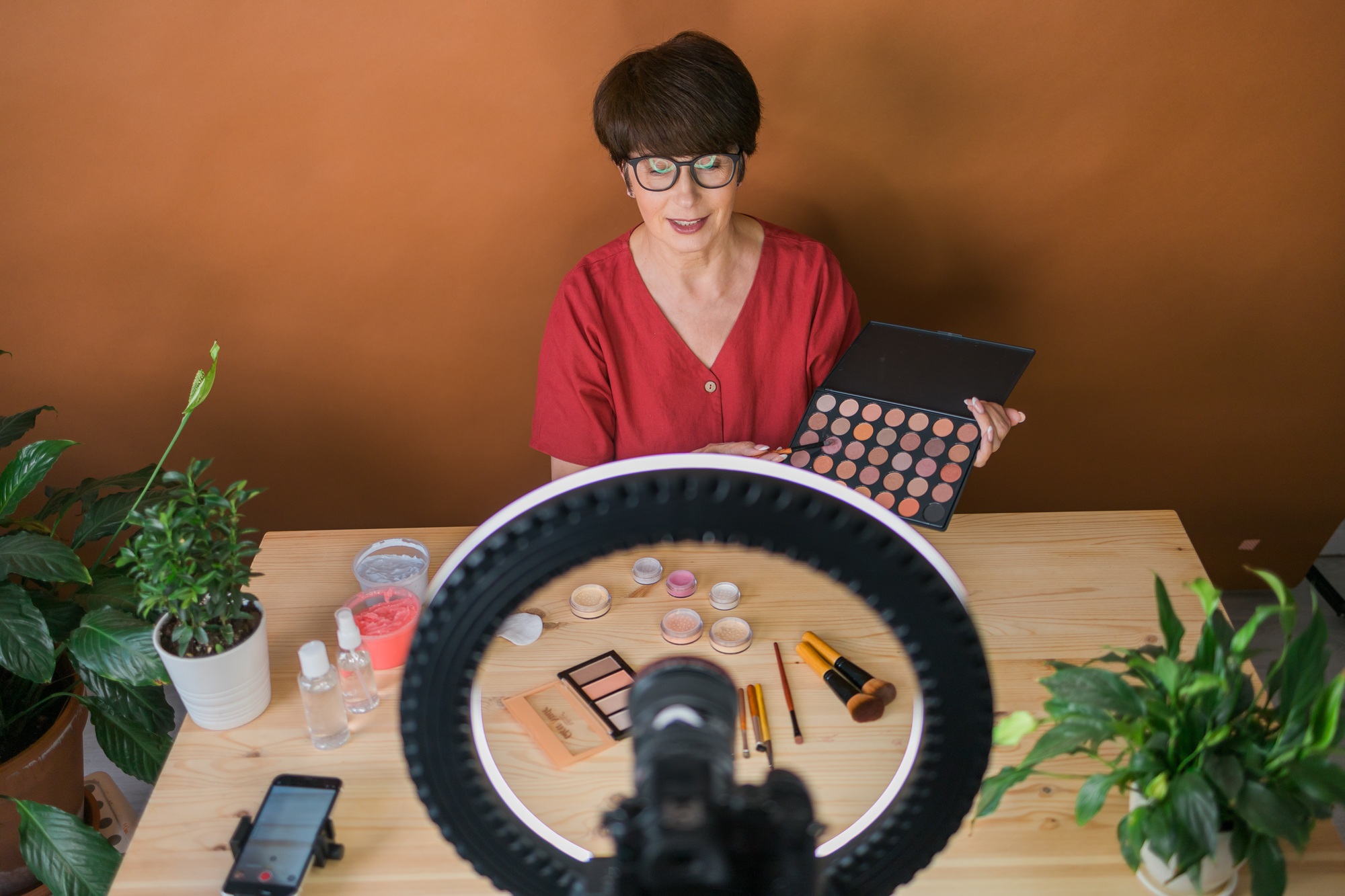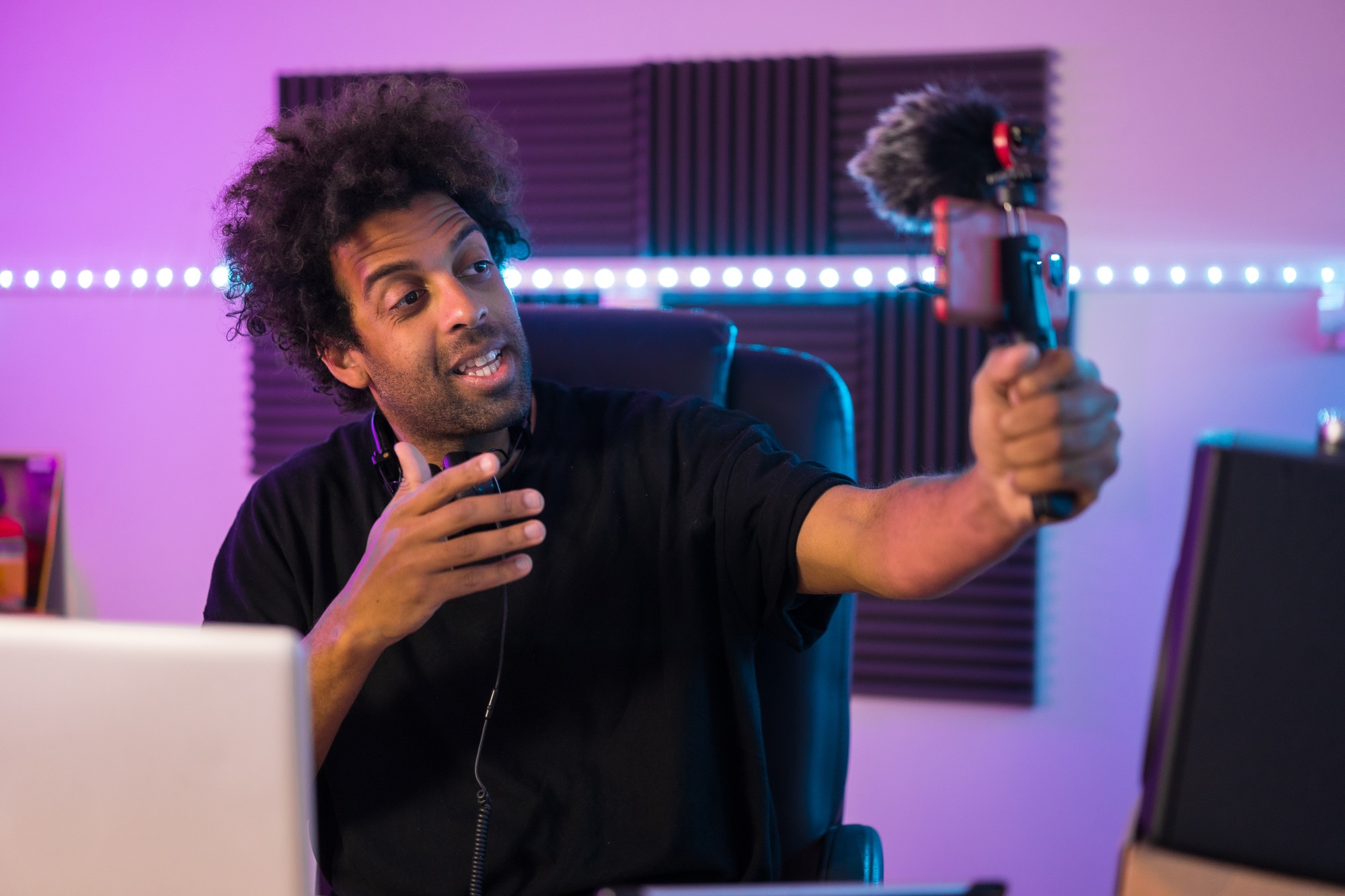Influencer marketing has the power to lift your conversions and sales dramatically. By partnering with the right influencers, you gain access to new audiences and build trust with potential customers. Imagine influencers as today’s word-of-mouth advocates; their dedicated followers eagerly await their recommendations, making them necessary allies in promoting your brand.
This article reveals effective strategies to improve your influencer marketing efforts. From crafting a compelling brand story to utilizing exclusive promotions, these insights will help you forge meaningful connections with your target audience and drive sales. Are you ready to let go the full potential of your influencer collaborations?
Let’s explore!
Key Takeaways

- Craft a compelling brand story that resonates with influencers and their audiences, making your message more shareable.
- Use affiliate marketing strategies, such as promo codes and affiliate links, to track performance and drive conversions effectively.
- Forge lasting partnerships with influencers, leveraging their credibility for sustained engagement and sales growth.
- Align influencer campaigns with peak shopping seasons to optimize visibility and improve conversion rates.
Understanding Influencer Marketing

Understanding influencer marketing is like discovering a treasure map to your audience. It allows brands to connect with their target audience through trusted voices on social media platforms. Influencers act as brand ambassadors, influencing their followers’ purchasing decisions. By sharing authentic promotions, they forge a critical link between your brand and potential customers.
Brands are increasingly turning to micro influencers and nano influencers for their dedicated followings and superior engagement rates compared to macro influencers. This strategic choice often leads to tangible results. Choosing the right influencers not only boosts conversions but also enhances brand visibility.
- Engaging content: Influencers create relatable content that resonates with their audience.
- Visual storytelling: This approach builds trust and credibility.
- Performance metrics: Use Google Analytics to track your campaign’s success.
Influencer marketing is a potent strategy that can remarkably increase your sales and reinforce your brand’s message. Are you ready to uncover the treasure of conversions?
Setting Up a Successful Influencer Marketing Campaign

Setting up a successful influencer marketing campaign is like assembling a dynamic puzzle—every piece must fit perfectly to show the full picture. Start by defining your objectives. What do you want to achieve?
Is it to increase conversions or lift brand awareness? Clear goals shape your entire strategy.
Next, identify your target audience. Picture them as a diverse flock of birds; you need to find the right influencers who connect with this group. Consider micro influencers and niche influencers; their smaller, dedicated followings often yield higher engagement than larger, less connected audiences.
When reaching out, craft a persuasive pitch. Authenticity is critical; explain how their unique voice aligns with your brand’s message. This sincerity builds trust and connection. At last, use analytics tools like Google Analytics to monitor your campaign’s performance. Keep track of engagement metrics and be ready to adjust your strategy for the best results.
Remember, influencer marketing goes beyond selling; it’s about building genuine connections. As you nurture these influencer partnerships, you’ll not only drive sales but also cultivate lasting relationships that can evolve into powerful brand ambassadors.
Identifying Your Target Audience
Identifying your target audience is like finding the perfect key to open up a treasure chest of opportunities in influencer marketing campaigns. Start by exploring audience demographics and engagement metrics with tools like Google Analytics. Ask yourself: Who are the potential customers that connect with your brand’s message? This knowledge empowers you to choose the right influencers and increase conversions remarkably.
- Define Interests: What hobbies or passions spark your audience’s thrill?
- Analyze Behavior: How do they interact with content on social media platforms?
- Engagement Patterns: What content do they share and engage with the most?
Understanding these elements allows you to tailor your influencer partnerships, creating authentic promotions that connect with a dedicated audience.
Choosing the Right Social Media Platforms
Choosing the right social media platforms is like picking the perfect stage for your show. Where does your target audience hang out?
Are they scrolling through Instagram, dancing on TikTok, or watching videos on YouTube?
Each platform has its unique vibe, similar to different music genres. For example, micro-influencers thrive on niche platforms, while macro influencers shine on larger channels.
Dig into the engagement metrics and audience demographics of potential influencers. Are their followers actively interacting with their posts?
This engagement is critical for boosting conversions through influencer marketing. Use tools like Google Analytics to track performance and make sure your strategies align with your objectives.
- Platform Selection: Target platforms where your audience is most active.
- Content Type: Match the influencer’s content style with your brand’s voice.
- Engagement Rates: Choose influencers with high interaction rates, not just large follower counts.
By thoughtfully selecting the right platforms, you can create genuine promotions that connect with new audiences, enhancing your brand awareness and driving sales.
Crafting an Effective Influencer Marketing Strategy
To craft an effective influencer marketing strategy, start by defining your objectives. What do you want to achieve—boosting conversions or increasing brand awareness?
Think of your campaign as a treasure map; without clear directions, you risk wandering off course.
Next, identify your target audience. Just as a fisherman selects the right bait for different fish, you need to choose niche influencers who connect with your audience. Micro and nano influencers often have loyal followers who trust their recommendations, making them powerful allies in your campaign.
Conduct in-depth research on potential influencers. Analyze their engagement metrics and how well they align with your brand’s message. It’s not just about the numbers; the right influencer should mirror your ideal customer demographic.
Focus on cultivating long-term relationships with influencers. Think of it as nurturing a garden; these partnerships will thrive over time. Give influencers creative freedom to produce authentic content that genuinely connects with their followers.
At last, use analytics tools like Google Analytics to track performance. Keep an eye on key performance indicators (KPIs) such as website traffic and conversion rates. This data is necessary for refining future campaigns and ensuring measurable success.
Measuring Success and ROI

Measuring success in influencer marketing is like testing score in a game—how do you know if you’re winning?
The answer is in the numbers! To understand the true impact of your influencer marketing campaigns, concentrate on key performance indicators (KPIs) such as engagement rates, conversion rates, and website traffic. These metrics show how well your content connects with the right audience.
Use tools like Google Analytics to track visitor traffic from your influencer’s content. Picture your website as a lively party; a busy crowd signifies success! To increase conversions, collaborate with micro influencers who have loyal followers and can promote your brand authentically.
Examining engagement metrics is critical. Are your followers liking, sharing, or commenting on posts?
This interaction builds lasting relationships with your audience. In social media, it’s not just about reaching a large crowd; it’s about creating meaningful connections with the relevant audience that genuinely appreciates your brand’s message.
| KPI | Description |
|---|---|
| Engagement Rate | Measures likes, shares, and comments on influencer posts. |
| Conversion Rate | Tracks how many visitors make a purchase after engaging with influencer content. |
| Website Traffic | Counts the number of visitors coming from influencer links. |
Understanding Influencer Marketing KPIs and Metrics
Understanding influencer marketing KPIs is necessary for gauging your campaign’s success—much like testing score in a game. Key metrics such as engagement rates, conversion rates, and reach serve as your strategic playbook. Just as a basketball player aims for the hoop, your objective is to improve brand awareness and drive sales through these critical indicators.
- Engagement Metrics: Likes, shares, and comments reflect how actively your audience interacts with the influencer’s content.
- Conversion Rates: This metric shows how many viewers made a purchase after engaging with an influencer’s post.
- Follower Growth: Tracking changes in an influencer’s audience helps assess their long-term impact.
Using tools like Google Analytics makes tracking these metrics straightforward. Think of it as a compass finding your way the influencer marketing strategy jungle, leading you to the right influencers and maximizing your ROI.
Tools to Measure Influencer Marketing Performance
Measuring the success of your influencer marketing campaigns is critical—like testing score in a game. It tells you if your strategies are effective. Tools like Google Analytics track website traffic and conversions, while social media metrics reveal engagement rates. Are your influencer partnerships reaching the right audience? By analyzing key performance indicators, you can increase conversions and sharpen your marketing strategy.
- Engagement Metrics: Likes, shares, and comments show how well your content resonates with viewers.
- Follower Growth: An expanding audience indicates increasing interest in your brand.
- Conversion Rates: Track how many followers turn into loyal customers.
These tools are your powerful allies in assessing the impact of your influencer marketing efforts. They allow you to make data-driven decisions, ensuring your campaigns deliver maximum results!
Strategies to Boost Conversions

To increase conversions with influencer marketing, recognize the vast potential of influencer partnerships. Imagine your brand as a ship finding your way the expansive ocean of social media, with influencers serving as lighthouses, guiding potential customers to your shores. How can you harness this power?
- Use Micro-Influencers: These creators possess dedicated audiences and higher engagement rates, making them a cost-effective choice for genuine promotions.
- Offer Exclusive Promotions: Work with influencers to deliver unique discount codes. This tactic creates urgency, motivating their followers to make quick purchasing decisions.
- Repurpose High-Performing Content: Incorporate successful influencer content into your ads. This not only boosts brand awareness but also provides social proof that drives conversions.
- Cultivate Long-Term Relationships: Ongoing collaborations nurture authenticity. When influencers consistently endorse your brand, their followers are more likely to trust their recommendations.
By implementing these strategies, you can remarkably improve sales and improve your return on investment (ROI) through measurable outcomes. The right influencer can transform your marketing campaigns into powerful engagement tools.
Leveraging Influencer-Generated Content
Leveraging influencer-generated content is like tending to a dynamic garden; with the right care, it blossoms into meaningful connections. Partnering with micro influencers or niche influencers grants you access to their loyal followers, leading to higher engagement rates and boosted conversions.
Harness their authentic promotions to create relatable content that resonates with your audience. This strategy not only elevates brand awareness but also drives website traffic and increases sales. By analyzing engagement metrics through tools like Google Analytics, you can refine your influencer marketing strategy for real results.
Isn’t it appealing to have your brand’s message echoed by trusted voices?
By fostering long-term partnerships with influencers, you build a powerful marketing channel that remarkably boosts your return on investment (ROI).
Offering Exclusive Discounts and Promo Codes
Offering exclusive discounts and promo codes through influencer marketing is like discovering hidden treasure for your audience. When followers see a special offer, it ignites urgency and makes them feel part of an elite club. Isn’t that exciting?
Just as a golden ticket unlocks extraordinary experiences, these promotions can remarkably increase conversions and drive sales.
Consider this: when influencers share unique codes, they’re not just promoting a product; they’re welcoming their loyal followers into a dynamic community. This strategy not only enhances brand awareness but also strengthens the connection between the influencer and their audience. It’s like a bridge linking potential customers directly to your brand’s message.
Incorporating these tactics into your influencer marketing strategy can lead to impressive results. By monitoring engagement metrics and using tools like Google Analytics, you can evaluate how these promotions impact website traffic and conversion rates. In the end, it creates a win-win scenario: influencers increase their credibility while brands enjoy increased sales.
Collaborating with Influencers to Create Engaging Content
Collaborating with influencers is like planting seeds in a garden; with proper nurturing, those seeds flourish into dynamic connections. By choosing the right micro influencers, you tap into a loyal audience that trusts their recommendations. This partnership serves as a bridge, connecting your brand to new customers while enhancing brand awareness and driving conversions.
When influencers create relatable content, they transform into powerful brand ambassadors, amplifying your message. This collaboration not only boosts sales but also elevates engagement across social media platforms. It’s not just about metrics; it’s about building lasting relationships that deliver real results.
Optimizing Your Campaigns for Social Commerce
Optimizing your campaigns for social commerce is like tuning a guitar; each tweak can create a beautiful melody of sales. To increase conversions through influencer marketing, consider these powerful strategies:
- Choose the right influencers: Focus on micro influencers who boast loyal followers and high engagement.
- Use exclusive promotions: Collaborate with influencers to offer limited-time discounts that create urgency and drive purchases.
- Analyze performance: Use Google Analytics to track engagement metrics and fine-tune your strategy.
- Build lasting relationships: Nurture influencer partnerships for authentic brand advocacy.
Just as a chef refines a dish, mastering these elements can lead to a significant increase in sales and brand awareness.
Summing up

Influencer marketing is a dynamic strategy for driving conversions. By collaborating with the right influencers, you open up access to new audiences and build genuine trust. Imagine offering exclusive discount codes or teaming up with micro-influencers to create buzz and urgency—it’s like lighting a spark that ignites interest. Nurturing these relationships is akin to tending a garden; with care, they can flourish into a thriving success. Explore diverse tactics to find what truly resonates with your brand. With a well-crafted plan, you can achieve impressive growth in both sales and brand visibility.
Frequently Asked Questions

What are the most effective influencer marketing strategies to increase conversions?
Collaborate with micro-influencers, offer exclusive discounts, and build long-term partnerships to drive urgency and trust.
What is the conversion theory of influencer marketing?
The conversion theory of influencer marketing suggests that authentic endorsements from trusted influencers drive consumer trust and prompt purchases.
How can brands measure the success of their influencer marketing campaigns?
Track engagement rates, conversion metrics, and sales data. Use unique discount codes and affiliate links to gauge campaign effectiveness.
What is a good conversion rate for influencer marketing?
A good conversion rate for influencer marketing usually ranges from 1% to 5%, but top campaigns can exceed 10%.
Image Via Envato: drazenphoto, MirkoVitali, GaudiLab, Unai82, Satura_, denismuse777, LightFieldStudios



